Elevate one end of the static bag so the ambient light goes around. If your ambient lighting is overhead, turn most of it off and shine a reflected and/or diffuse light source under your bag. You'll be able to tell what's inside a little better. These are at the same angle, same ambient lighting, the only difference being there is no light coming through the first one, and the second has a reflected light hitting the benchtop under the bag. A white backdrop would probably help, as would a backlight with a neutral color temperature (unlike mine). These were done pretty quickly; I imagine your results can only get better, the longer you experiment with the concept.
You will still have to putz with contrast and color saturation in photoshop (hint: wear a white shirt, not a red one like mine when I shot these) but at least you can tell there is something in the bag.
Click to embiggen!
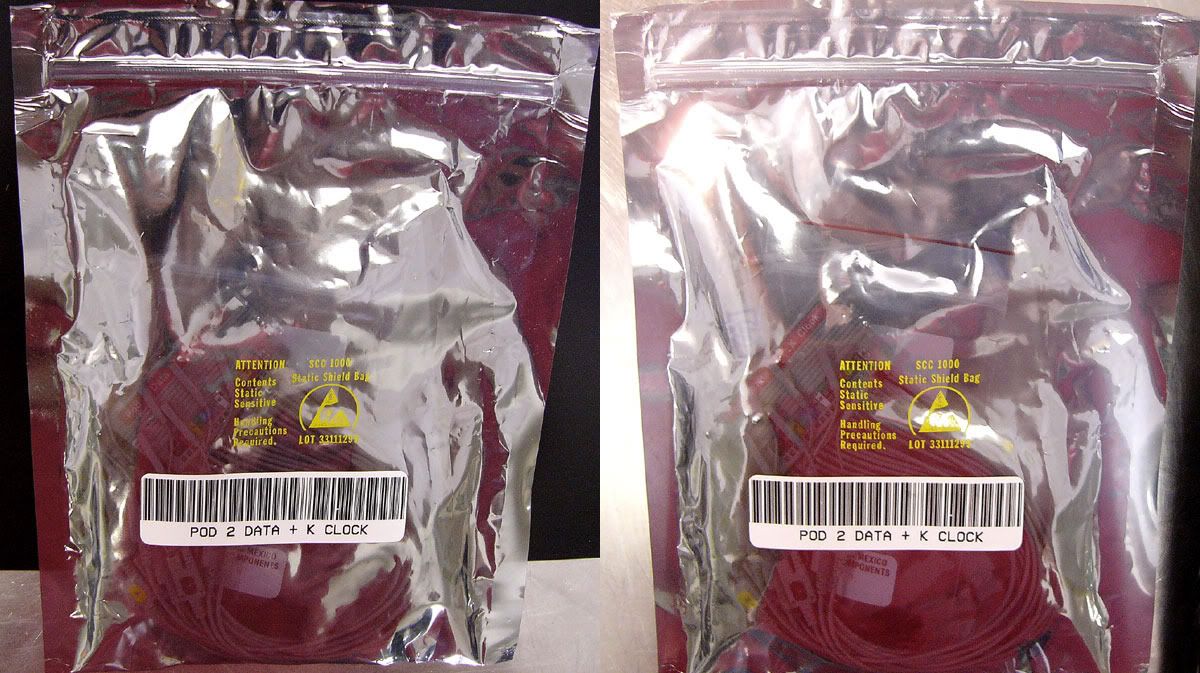

********
Update: Reader David asks if a polarizing filter would help. Under my fluorescent lighting, on a stainless backdrop, a polarizing filter actually made it worse, by darkening the image. These were shot with the same camera settings, with the same post-processing applied in Photoshop. I don't note any significant clarity improvement with the polarizer. I rotated it all the way 'round just in case, and took pictures every 90º of rotation.
Seriously Wide Image, click to embiggen
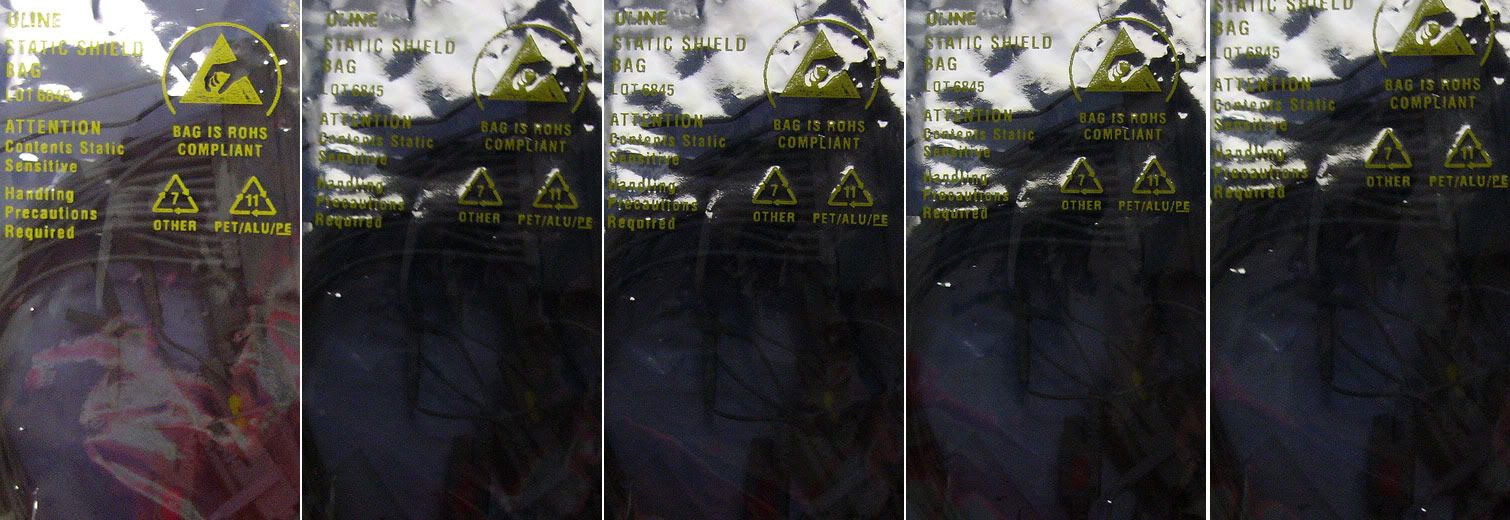
But VFD, that's on manual settings! Your camera will compensate for the filter on manual settings!
Sure it will. Those were all taken at F4 @ 1/25sec. My camera likes F2.8 for shooting indoors. It also has a funny idea of what a washed-out image isn't. Here are the results of shooting in automatic mode at an angle that lets you see what's inside the bag:
Click to see full size.
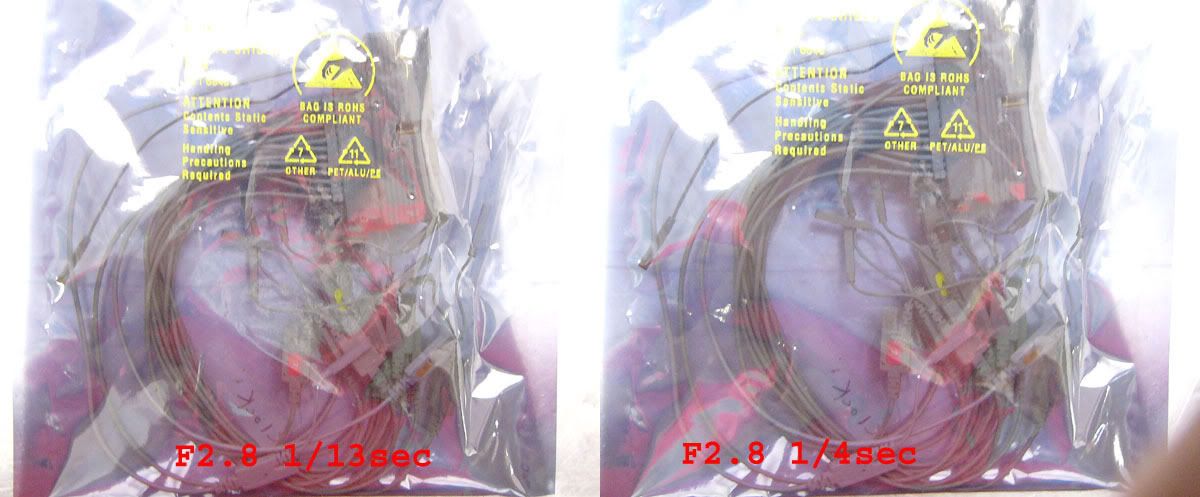
The one on the right is through the polarizer. It is the clearer of the shots I tried with the camera on auto. The amount of glare reduction you see could very easily be as a result of a camera angle being a degree or two different. The rest of the shots thru the filter were all somewhat more blurred, because the shutter was open for a whopping QUARTER of a second to make up for the dimness of the filter! I could try it with a tripod, but I think you all can see a theme in my opinion of how much a polarizing filter helps *in this circumstance* with this camera and subject.
What do you think? This is a series of shots taken with the same camera settings and setup. The only difference is the camera angle relative to the light reflecting off the ESD bag.
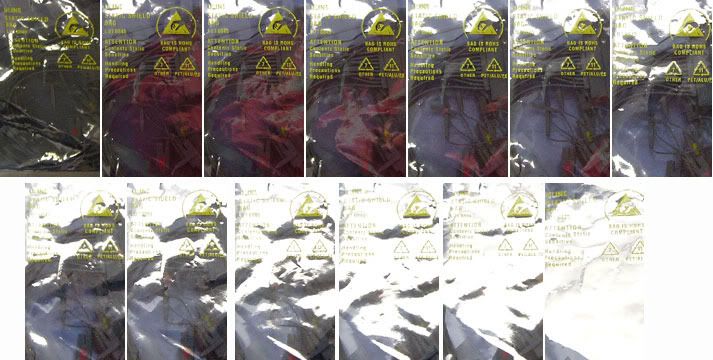
And here I used the automatic setting and the only difference is the polarizer:
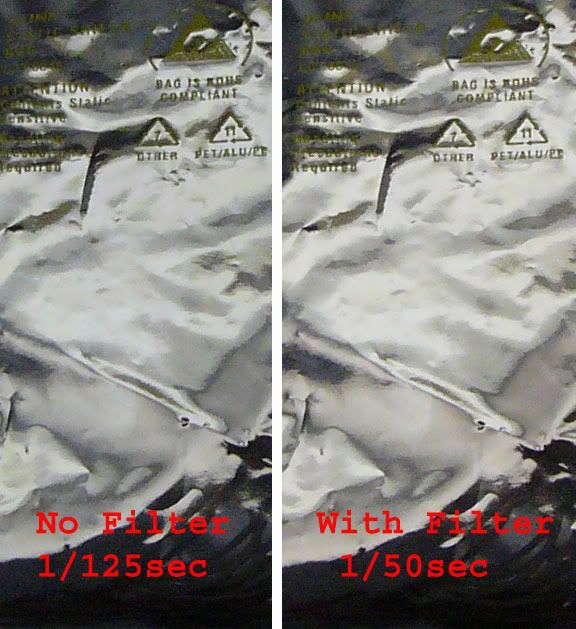
I guess the polarizer does help. A little bit. If you have good lighting, it might make your life a *very* little easier. The bigger difference seems to come not from using a polarizer, but from making sure your lens is in the right place.
Don't polarizing lenses help?
ReplyDeleteNot if you don't have one!
ReplyDeleteI do. I'll try it and update this post. Thanks.